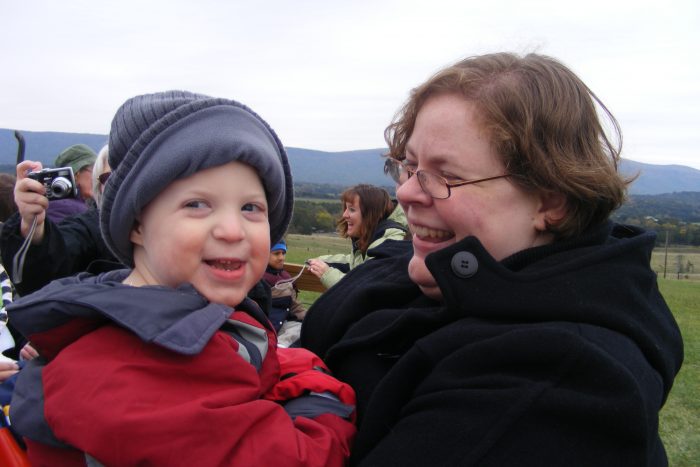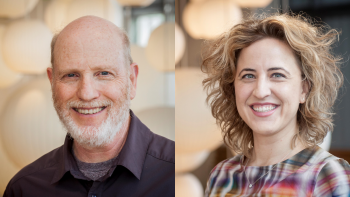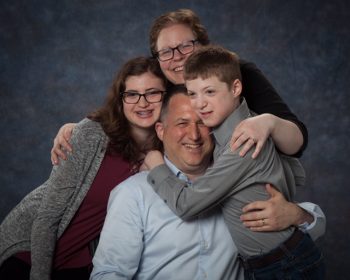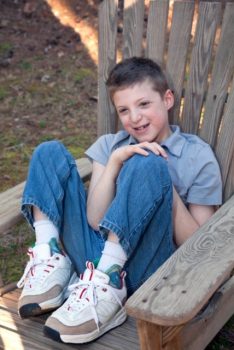
In the largest genetic study of the most common birth defects of the brain diagnosed during pregnancy, researchers from Seattle Children’s Research Institute say their findings evolve our understanding of brain development. The findings will also change the information given to expecting parents when cerebellar malformations, such as Dandy-Walker malformation and cerebellar hypoplasia, are detected prenatally.
With funding support from the Dandy-Walker Alliance and the Philly Baer Foundation, the results gathered from 100 families provide the most accurate information to date about the genetic and non-genetic causes of birth defects involving the cerebellum. They will also help doctors counsel parents about their child’s prognosis after they’re born and their risk of having another child with the abnormality.
“For those who are pregnant, you certainly don’t want to have a problem with the baby, but if doctors detect a brain abnormality, you want accurate information about what that means,” said Dr. William Dobyns, the senior author on the paper published in the American Journal of Human Genetics and an investigator in the Center for Integrative Brain Research. “It’s the same after birth. If you have a child at risk for developmental challenges, it helps to know the cause and what’s going to happen. This study significantly advances our ability to answer those questions.”
Bringing greater clarity to cerebellar malformations

Housing 80% of all neurons, the cerebellum is known to control motor coordination as well as integration of sensory input and regulation of attention, mood and emotions. Yet, little is known about the development of the cerebellum and the rise of abnormalities, which can lead to epilepsy, intellectual disability, cerebral palsy and autism in children.
By analyzing the genetic sequencing results, imaging and clinical features of the patients with Dandy-Walker malformation or cerebellar hypoplasia enrolled in the study, Dobyns and lead author, Dr. Kimberly Aldinger, identified 27 different genes as key contributors. Most of the genes identified were already known to cause specific neurodevelopmental syndromes.
In addition to establishing a genetic diagnosis for 36 of the children, their cohort confirmed that many abnormalities, about 30%, were due to prenatal risk factors and would not be expected to have a genetic cause.
“We’ve finally pieced together how to determine whether a birth defect of the brain is genetic or not in any given child,” Dobyns said. “Clear patterns emerged from our detailed study, and we could confidently attribute a full third of cerebellar malformations to non-genetic, prenatal causes. Those with a genetic cause most often arose as a feature that could appear as part of a larger disorder like epilepsy or autism.”
New insight on Dandy-Walker malformation
In children with Dandy-Walker malformation, the most common structural defect of the cerebellum affecting about 1 in every 10,000 births and often a cause of significant intellectual and motor delays, the study showed these abnormalities rarely have a genetic cause. The researchers also looked at long-term outcomes and found that half of the children with a Dandy-Walker malformation went on to have a normal intellectual development, meaning they often participate in typical school classes, go to college and hold jobs as adults.
According to Aldinger, this is more definitive information than what doctors can currently give parents about what to expect in a child with Dandy-Walker.
“When you first see a Dandy-Walker malformation on a prenatal imaging scan, it looks like the brain is severely affected,” she said. “The picture says this looks really bad, and it’s easy for parents to associate this with a significant intellectual disability for the child, but as we saw in our study that’s not the case for a lot of children.”
The start of a diagnostic journey
Dobyns and Aldinger anticipate that the breadth of their findings will change how cerebellar malformations are diagnosed clinically. Historically, Dandy-Walker malformations and cerebellar malformations have served as a primary diagnosis for families.
Based on their findings, a cerebellar malformation detected early in development should prompt a comprehensive clinical evaluation that includes a prenatal history, postnatal neuroimaging and when necessary, genetic testing, to uncover the genetic and non-genetic causes. In most cases, this will provide a more complete picture of the child’s condition and occasionally, it may help doctors identify potential treatments.
“A cerebellar malformation is really the start of a diagnostic journey,” Dobyns said. “For a small number of children, this information will lead us to a silver bullet, an existing therapy that targets the child’s genetic mutation that could present a new treatment pathway. For the majority, children with genetic conditions that we can’t fix, the more we understand, the better we can help the family manage their child’s condition.”
Family contributes to research advance

Lara Sokoloff and her son, Daniel, participated as one of the families in the study. From his previous position in Chicago, Dobyns first diagnosed Daniel with a cerebellar malformation as an infant when the family was then living in Virginia. Daniel had a subtype known as cerebellar vermis hypoplasia that caused him to have significant developmental delays and some behavioral issues. At 13, he attends special needs classes at school and will need daily care for the rest of his life.
“It’s always helpful when you are a parent of a kid with disabilities to have a team, to know that you have people on your side,” Sokoloff said. “For a long time after Daniel was diagnosed, Dr. Dobyns was the one who was always there to answer my questions.”
Separately, both Dobyns and the Sokoloffs made their way to Seattle and reunited in the Genetics program at Seattle Children’s in 2013. Here, Daniel was one of the 36 children who received a genetic diagnosis after his and his parents’ genes were sequenced as part of the study. It provided information that Sokoloff had been seeking since Daniel was a baby.
 “More than anything I wanted to know what was going on with Daniel and why,” she said. “We got the answer we needed and while it didn’t change anything for Daniel, we participated in the study because I’ve always wanted to help people in the future.”
“More than anything I wanted to know what was going on with Daniel and why,” she said. “We got the answer we needed and while it didn’t change anything for Daniel, we participated in the study because I’ve always wanted to help people in the future.”
Upon hearing the news of Daniel’s contribution to this research advance, Sokoloff expressed the hope she has for her son and future discoveries.
“The amazing thing about Daniel is he doesn’t go backwards. He doesn’t lose the skills he has gained like walking or communicating verbally,” she said. “He kind of writes his own playbook and because there wasn’t a lot of concrete information available about his diagnosis, I’ve never put a lot of stock in what the outcome might be. This research offers a good step forward for families. There’s just so much we can learn, so who knows what might be possible with more research.”

